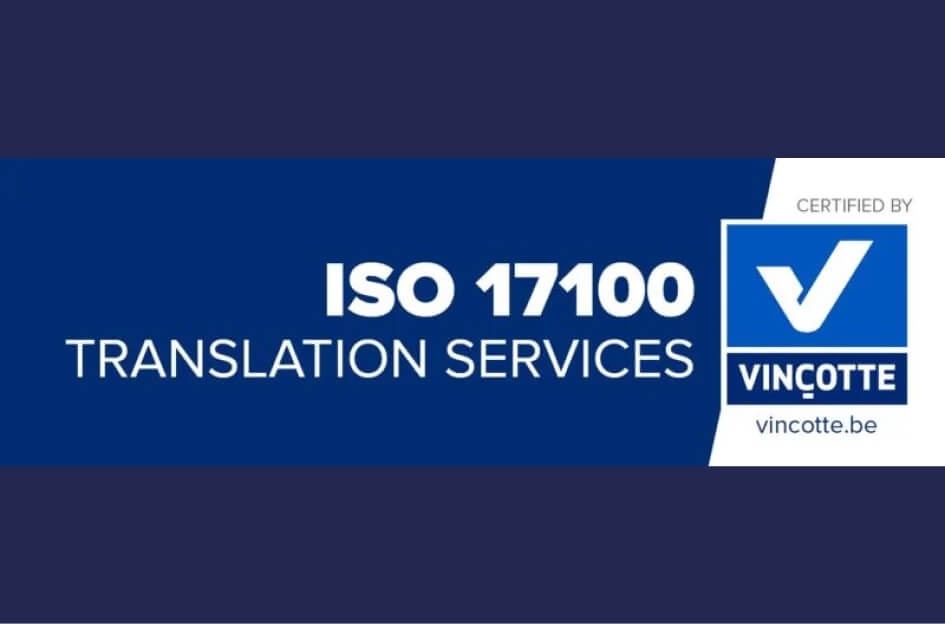Launching a SaaS product globally is a challenge in itself. Fortunately, SaaS localization software is the secret sauce that can help your software conquer new markets like never before. But what exactly is SaaS Localization? It adapts your software to different global languages and cultures according to the launch region. Considering the growing global demand for SaaS products, businesses are realizing that a one-size-fits-all approach just won’t cut it anymore. SaaS localization is the key to unlocking opportunities catering to unique and diverse user needs. So why wait? Let’s dive into the SaaS localization nitty-gritty and discover how it can revolutionize your business.
Did you know that 75% of users prefer using software in their native language? That’s a staggering number! By partnering with a reliable localization service or hiring a skilled localization manager, you can ensure your software speaks directly to your target audience. The localization process involves translating words, cultural nuances, and user experience elements. This attention to detail boosts customer satisfaction and increases software adoption rates in foreign markets. So whether you’re an established player or a budding startup, investing in SaaS localization will give you an edge over the competition and help drive growth worldwide.
Now that we’ve set the stage for this exciting journey into SaaS localization let’s explore its benefits further and unravel its potential impact on your business success.
Importance of SaaS Localization for Global Success
Enhancing user experience through language customization
Language is crucial to any software-as-a-service (SaaS) company’s success. Localizing SaaS products helps companies can enhance the user experience for international customers. When users access a SaaS platform in their native language, they feel more comfortable and confident about it. Ultimately, the enhanced user experience boosts software adoption rates and customer satisfaction.
Localization goes beyond translation. It is a process that adapts the software to cultural nuances and country-specific user preferences. For example, date format, currency type, and measurement units should be displayed according to local conventions. SaaS companies can ensure that their global audience feels at home in local languages by customizing software language and interface while using their product.
Expanding market reach by catering to local preferences
Global markets offer immense opportunities for business growth, but entering foreign markets requires understanding and adapting to different cultures. Localization allows SaaS companies to tailor their offerings to specific regions or countries, enabling them to effectively cater to local preferences.
By considering design aesthetics, color symbolism, and even content tone, SaaS companies can create an emotional connection with potential customers in different cultures. For instance, what may be considered an appealing color scheme in one region might have negative connotations elsewhere. Understanding these nuances helps businesses avoid unintentionally alienating potential customers.
Moreover, localized marketing efforts like region-specific promotional campaigns or partnerships with local influencers can significantly boost brand visibility in foreign markets. By embracing localization as a strategic approach, SaaS companies can expand their market reach beyond borders.
Gaining a competitive edge in international markets
In today’s interconnected world, competition knows no boundaries. SaaS companies must invest in localization to gain a competitive advantage in global markets. They can position themselves ahead of competitors who fail to recognize the importance of localization simply by adopting SaaS Localization practices.
Localization improves user experience and market reach and demonstrates a commitment to understanding and serving diverse customer bases. This can foster trust and loyalty among international users, giving SaaS companies an edge over their competitors.
Furthermore, localized products are more likely to resonate with customers in foreign markets. When software speaks their language, addresses their unique needs, and aligns with their cultural expectations, customers are more inclined to choose it over foreign or generic alternatives.
Best Practices for Localizing Your SaaS Application
Thorough Market Research
Conducting thorough market research before diving into the localization testing process is crucial. It provides a deeper understanding of the target market’s behavior and needs so you can effectively tailor your SaaS application to meet customer expectations.
Market research for localization involves first studying cultural norms, language preferences, and legal requirements specific to the target region. It will provide insights into how your product should be adapted to suit the local users’ expectations. For example:
Identify key features and functionalities that resonate with local customers.
Determine if any cultural nuances need to be considered while designing user interfaces.
Understand legal documents or regulations that may impact your SaaS application in the target market.
Adapting User Interfaces and Content
One of the essential aspects of successful localization is adapting user interfaces and content to suit cultural nuances. This ensures local users feel comfortable using your SaaS application while maintaining a consistent brand image. Here are some best practices:
Language Localization: Translate all text elements within the application accurately. Collaborate with native speakers or professional translators who understand target languages.
Date and Time Formats: Adjust date and time formats according to regional conventions (e.g., MM/DD/YYYY vs DD/MM/YYYY).
Currency: Display prices in the local currency format, considering appropriate symbols or decimal separators.
Measurement Units: Convert measurement units (e.g., inches to centimeters) based on regional preferences.
Images and Icons: Ensure images used are culturally appropriate and resonate with local users.
Collaboration with Native Speakers and Translators
Collaborating with native speakers and professional translators is pivotal in achieving accurate localization for your SaaS application. Their expertise helps bridge language barriers, ensuring smooth communication with local customers.
Native speakers can provide valuable insights into cultural nuances, idiomatic expressions, and local preferences. Meanwhile, professional translators ensure accurate translation of your content without losing its original meaning. Here are some ways to collaborate effectively:
User Testing: Engage local users in the testing phase and gather their feedback to identify areas of improvement.
Continuous Feedback Loop: Maintain open communication with native speakers and translators throughout the localization process to make timely adjustments.
Style Guides: Develop comprehensive style guides to maintain consistency across translated content.
By leveraging the expertise of native speakers and professional translators, you can create a localized SaaS application that resonates with local customers and meets their expectations seamlessly.
Key Considerations in SaaS Localization Strategy
Identifying target markets and prioritizing languages for localization
A SaaS localization strategy involves identifying a target market for the right localization languages. Understand your target audience’s needs and preferences to effectively tailor your product to their requirements.
To determine which markets to focus on, conduct thorough market research to gain insights into potential customer demand. This research should include market size, growth potential, competition analysis, and cultural considerations. Understanding the local and global market and dynamics allows you to make informed decisions about language priorities.
Consider creating a list of target countries or regions based on their market potential. Analyze key indicators like population size, internet penetration rates, and GDP per capita to identify promising markets that align with your business goals. Once you have identified these priority markets, you can determine which languages are essential for efficient localization strategy.
Adhering to local regulations, legal requirements, and data privacy laws
Localization goes beyond language translation and complying with local regulations, legal requirements, and data privacy laws. Each country may have rules governing software usage or data protection that must be followed.
To ensure compliance with local regulations and legal frameworks, consult legal experts specializing in international business laws or engage a professional consultancy service. They can guide you through the intricacies of each market’s legal landscape and help you adapt your SaaS product accordingly.
Data privacy is another critical consideration when expanding internationally. Different jurisdictions have varying levels of stringency regarding data protection laws. Implement robust security measures such as encryption protocols or anonymization techniques to safeguard user data.
Implementing scalable solutions to streamline future updates and additions
As part of an effective SaaS localization strategy, it is essential to implement scalable solutions that streamline future updates and additions across multiple languages. This ensures efficient management of localized versions without compromising quality or consistency.
Consider using a cloud-based content management system (CMS) that allows for seamless updates across different language versions. This will enable you to make changes in one central location, automatically reflecting them in all localized versions. A CMS can facilitate collaboration between translators and developers, reducing the time and effort required for ongoing maintenance.
Another approach is to adopt a modular design architecture that separates content from code. Decoupling content from the underlying software infrastructure allows you to easily update and add new features without disrupting the localization process. This flexibility enables faster time-to-market for localized versions while maintaining scalability.
Overcoming Challenges in SaaS Localization
Managing complex technical integrations during the localization process
Software as a Service (SaaS) product localization presents unique challenges, particularly. SaaS localization adapts software applications to different languages, cultures, and regions. The translation process often requires careful consideration concerning language support, user interface design, and compatibility with different operating systems.
To overcome these challenges, SaaS providers must ensure seamless integration between their core platform and the localized versions. Robust APIs (Application Programming Interfaces) that facilitate efficient communication between different software components are a good option to achieve it. Developers can streamline the localization workflow process and minimize potential issues arising from technical complexities by implementing well-defined APIs.
Furthermore, SaaS providers must collaborate closely with localization teams or vendors with expertise in software development and linguistic capabilities. This collaboration allows for effective coordination between technical requirements and language-specific considerations during integration.
Dealing with linguistic variations, dialects, and character encoding issues
Another significant challenge in SaaS localization is managing linguistic variations, dialects, and character encoding issues. Languages differ in terms of vocabulary, grammar structures, and cultural nuances. Therefore, adapting a SaaS product for multiple languages requires careful attention to detail.
To address this challenge effectively, SaaS providers should invest in comprehensive language resources that cover regional dialects and cultural differences within target markets. These resources can include style guides, glossaries of industry-specific terms, and reference materials that aid translators in capturing the intended meaning accurately.
Character encoding issues can also pose hurdles during localization efforts. Different languages use diverse character sets that may require adjustments within the software’s codebase or database structure. It is essential to properly handle special characters or diacritical marks specific to certain languages so that users can interact seamlessly with the localized version.
Ensuring consistent quality across multiple language versions
Maintaining consistent quality across multiple language versions of a SaaS product is vital for user satisfaction and brand reputation. Inconsistencies in translation or functionality can lead to confusion and frustration among users, ultimately impacting customer retention rates.
SaaS providers should establish robust localization processes that include thorough linguistic testing and quality assurance measures to achieve consistent quality. This involves meticulous proofreading manual localization testing, functional testing, and usability evaluation of each localized version to identify discrepancies or issues.
Implementing a centralized content management system (CMS) can greatly facilitate the localization process while ensuring consistency. A CMS allows for efficient source content management and its translations, enabling easy updates and modifications across all languages. By centralizing content translation management system itself, SaaS providers can minimize the risk of inconsistent messaging or functionality variations between different language versions.
Boosting User Experience through Effective SaaS Localization

Effective product localization strategy is key. By tailoring your product to different regions’ specific needs and preferences, you can enhance user experience and drive customer satisfaction.
Providing intuitive multilingual interfaces with seamless navigation
One of the primary goals of software localization is to ensure that users from different countries can effortlessly navigate through your application. Translating the user interface into their local language eliminates language barriers and provides a more inclusive and seamless user experience. Professional translation services can be enlisted to accurately translate all interface elements, including buttons, menus, and error messages.
It is crucial to consider the layout and design when adapting your app for multiple languages. Some languages may require more space or have different reading directions than English. A localization team can assist in optimizing the UI layout for each target language, ensuring that translated text fits naturally within the interface.
Customizing date formats, currencies, and units of measurement as per local conventions
Localization goes beyond mere translation; it involves adapting various cultural aspects embedded within an application. Date formats, currencies, and units of measurement vary across regions. To provide a truly localized experience, you should customize these elements according to local conventions.
For example:
Display dates in the target audience’s preferred format (e.g., MM/DD/YYYY or DD/MM/YYYY).
Show prices in local currencies.
Adjust units of measurement (e.g., kilometers versus miles) based on regional preferences.
By incorporating these localized details into your SaaS platform, users will feel more comfortable interacting with your product since it aligns with their cultural norms.
Offering localized customer support channels for prompt assistance
Effective SaaS localization extends beyond the application itself. To ensure a positive user experience, it is essential to provide localized customer support channels. This includes offering assistance in the local language through various communication channels such as email, live chat, or phone.
By employing professional translators for customer support, you can guarantee accurate and prompt responses to users’ queries or concerns. This personalized approach enhances the overall customer experience and builds trust and loyalty among your international user base.
Maximizing Revenue with Successful SaaS Localization
Expanding into new markets is a key strategy for any SaaS company looking to maximize revenue. Successful SaaS localization is one effective way to tap into untapped global and local markets together. By adapting your product to cater to different regions’ unique needs and preferences, you can unlock new opportunities and attract a larger customer base.
Capitalizing on untapped global markets by offering localized solutions
Product and SaaS localization service plays a crucial role in successfully entering new markets. It involves adapting your software or service to meet different regions’ specific cultural, linguistic, and functional requirements. Investing in localization ensures that your end product resonates with customers in these markets.
To capitalize on untapped global markets effectively, consider the following strategies:
Market research: Conduct thorough market research to identify target markets with high growth potential. Understand their unique needs, preferences, and pain points.
Localization team: Assemble a dedicated team of experts who understand the local market dynamics and possess language proficiency.
Cultural adaptation: Adapt your software’s user interface, graphics, colors, images, symbols, and even content to align with the cultural norms and sensitivities of each target market.
Language translation: Translate all textual elements accurately while considering linguistic nuances and idiomatic expressions.
Local regulations: Ensure compliance with local laws and regulations regarding data privacy, security standards, taxation rules, etc.
Pricing strategies that align with regional purchasing power
Setting appropriate pricing strategies is vital when targeting different regions, as purchasing power varies across countries. To optimize revenue generation through SaaS localization:
Regional pricing tiers: Offer multiple pricing tiers tailored to specific regions based on economic conditions and affordability.
Currency conversion: Provide customers the convenience of paying in their local currency by integrating reliable payment processors that support various currencies.
Flexible payment options: Accommodate diverse payment methods commonly used in each target market, such as credit cards, digital wallets, bank transfers, or localized payment gateways.
Leveraging targeted marketing campaigns tailored to specific regions
To effectively promote your SaaS product in new markets, it is crucial to tailor your marketing campaigns to resonate with the local audience. Consider the following strategies:
Localized content: Create compelling and culturally relevant content in the local language that highlights how your product solves its unique challenges.
Influencer partnerships: Collaborate with influential figures within the target market who can endorse your product and help build trust among potential customers.
Social media engagement: Leverage popular social media platforms used by the local population and engage with them through relevant content, contests, and giveaways.
Localized SEO: Optimize your website and online presence for local search engines by incorporating region-specific keywords and implementing geotargeting techniques.
You can maximize revenue through SaaS localization by focusing on these talking points – product, best SaaS localization practices, target markets, market research, payment process, and targeted marketing campaigns. By adapting to regional needs while maintaining a user-friendly experience, you will position yourself as a trusted provider in new markets while unlocking untapped growth opportunities.
Conclusion
To achieve global success with your SaaS application, effective localization is crucial. Using SaaS localization tools, you can tailor your software to meet the specific user needs and preferences in different regions. It will enhance the user experience and maximize your revenue potential.
Throughout this guide, we have highlighted the importance of SaaS localization for global success. We discussed best practices for localizing your SaaS application, emphasizing the need for linguistic and cultural adaptation. We explored key considerations in developing a successful localization strategy and provided insights on overcoming challenges that may arise during the process.
Implementing these strategies can boost user experience through effective SaaS localization. Users will appreciate software that speaks their language and aligns with their cultural norms. This will foster trust and loyalty among your target audience.
Furthermore, successful SaaS localization has a direct impact on revenue generation. When users feel that an application understands their needs and provides a seamless experience in their native language, they are more likely to become paying customers. Localization can open doors to new markets and increase customer acquisition rates.
In conclusion, prioritizing SaaS localization is essential for achieving global success in today’s interconnected world. Adapting your software to different languages and cultures creates a personalized user experience that resonates with users worldwide. Embrace the power of localization to unlock new growth opportunities for your business.
FAQs
Q: How does SaaS localization benefit my business?
Localization helps businesses expand into international markets by tailoring their software to meet the needs of different regions. It improves user experience, increases customer acquisition rates, and boosts revenue potential.
Q: What are some common challenges in SaaS localization?
Challenges in SaaS localization include linguistic nuances, cultural adaptations, technical complexities, time constraints, and maintaining consistency across multiple languages.
Q: How can I ensure quality in SaaS localization?
To ensure quality in SaaS localization, working with professional translators and localization experts with domain-specific knowledge is crucial. Conducting thorough testing and gathering user feedback can help identify areas for improvement.
Q: Is SaaS localization only about translating text?
No, SaaS localization goes beyond mere a translation management software alone. It involves adapting the software’s interface, content, and functionality to suit target users’ cultural preferences and expectations.
Q: Can I localize my SaaS application without external assistance?
While it is possible to attempt SaaS localization internally, partnering with a professional localization service provider brings expertise and ensures high-quality results. Their experience in handling complex linguistic and technical aspects will save time and resources.
Q: How long does SaaS localization typically take?
The duration of SaaS localization depends on application complexity, the number of languages involved, resource availability, and project management efficiency. Generally, it is recommended to allocate sufficient time for planning, execution, and quality assurance.
Q: What are some examples of successful SaaS localization?
Companies like Slack, Zoom, and Spotify have successfully localized their software applications to cater to global audiences. They prioritize user experience by providing localized interfaces, content translations, culturally adapted features, and seamless multilingual support.




